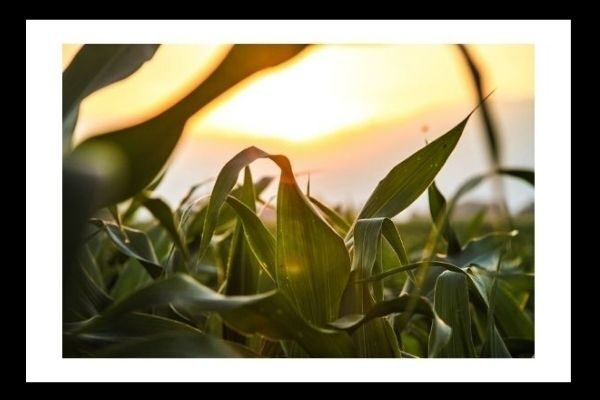
Feed is the largest single production expense on the dairy farm.
No feed means no milk. Period.
Regardless of all the other factors that enter the equation, such as cow genetics, health and management, the dairy feeding program most affects productivity and profitability.
So, from the dairyman’s standpoint, the marketing slogan “Got Milk? easily translates into: “Got Feed?”
Imagine this dairy family’s relief when our grain corn harvest finally came in three days before Thanksgiving.
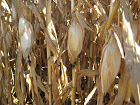
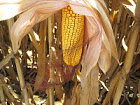
Then it’s time for the combine harvester to come in.
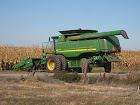
Today’s combine harvester is a huge, computerized machine that:
- cuts the corn stalks
- pulls each ear from the corn stalk
- removes the husks
- beats the corn kernels from the cobs
- unloads the corn kernels into a waiting trailer
- disperses the chaff from the back of the harvester over the field.

On the front of the corn combine is the header, which is divided into pointed projection arms that match the spacing of the corn rows.

Behind the header arms is a wheel that pulls the corn stalks into the machine and feeds it to the cutter bar, which in turn cuts off the stalks.
Next, the stalks are conveyed to the threshing drum, a large spinning cylinder that breaks apart the corn plant, beats the kernels off the cobs and shakes the kernels away from the chaff (stalks and cobs).
The corn kernels fall through holes in a giant sieve into the collection chamber.
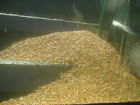
The stalks and cobs continue along a conveyor toward the back of the combine and are dispersed over the field to be baled later for bedding.

When the collection bin is full, corn is moved up a long pipe with an un-loader chute from which the corn falls into a waiting truck trailer.

Our grain – corn harvest totaled 347 ton. Not too shabby. The baled chaff will yield approximately 500 ton.
So, in a time of sky-high corn and bedding prices, that translates into: “Happy…Farmers.”
Just giving you a taste of what my life is like when I’m not writing.
As always, thanks for stopping by,


